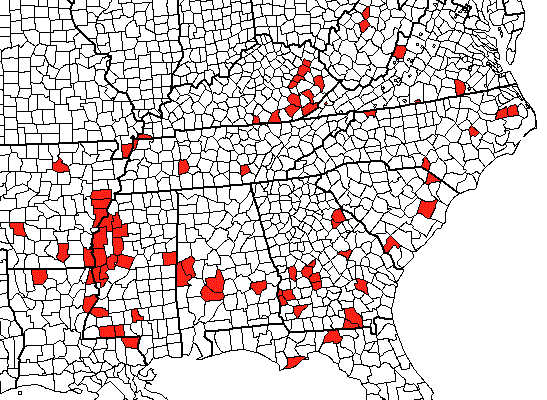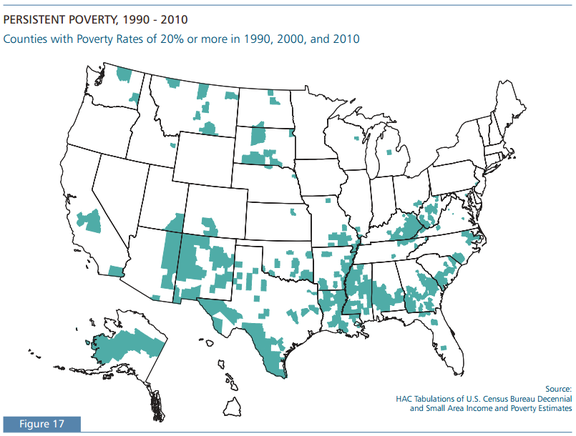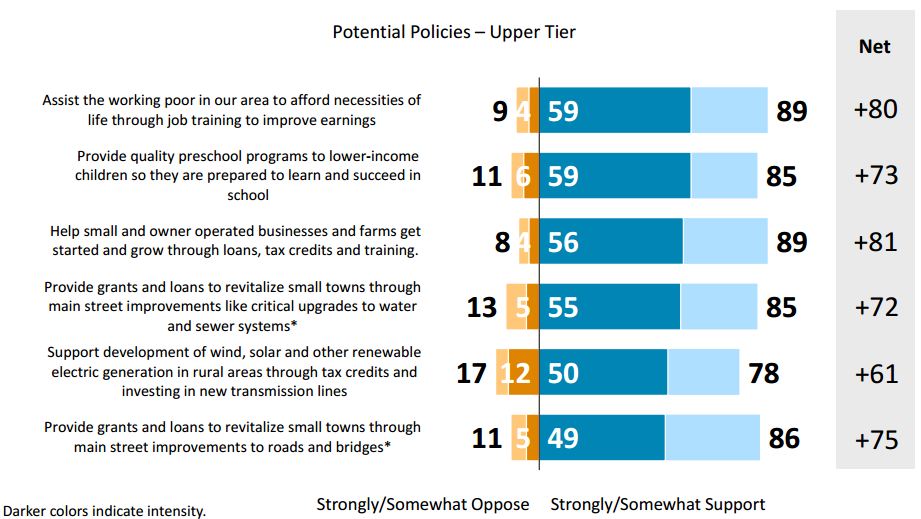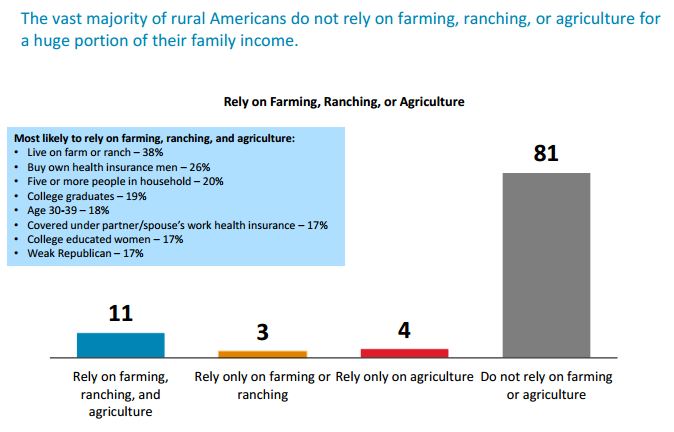How many people do you think live in small towns or rural areas in the South? Let me be more specific - how many people live in counties with fewer than 60,000 people?
Let's make it multiple choice, and I'll give you a hint -- this number is comprised of the population of 753 qualifying counties.
A. 1 million
B. 5 million
C. 10 million
D. 17 million
Let's make it multiple choice, and I'll give you a hint -- this number is comprised of the population of 753 qualifying counties.
A. 1 million
B. 5 million
C. 10 million
D. 17 million
The answer is D. 17 million. Essentially two New York Cities (just the five boroughs). Together, the Southern states - not including any counties in Missouri, Florida, or Texas - come to around 50 million in population.
What if we go more rural? How about counties with fewer than 20,000? That has to be basically nothing, right?
It's the population of the entire San Francisco metro area - 4,500,659 over 369 counties.
I'll say that again -- the population of the more rural South is equal to the population of the ENTIRE Bay Area.
I'll say that again -- the population of the more rural South is equal to the population of the ENTIRE Bay Area.
I know the Delta Regional Authority and Appalachian Regional Commission are out there along with some sub-regional groups, but where's the ecosystem? Where's the collective effort? There are more and more efforts coming on line to increase quality of life for all people in large cities like Boston and Chicago and even smaller cities like Denver and Kansas City. Where's the equivalent effort in the small town South?
If you live in Orangeburg, SC; or Vicksburg, MS; or Dyersburg, TN, how are you going to get a leg up? In all honesty, odds are you aren't.
While the world marvels at the wonders of New Orleans, Nashville, Atlanta, and others, another generation is slowly being entrapped a half hour's drive away.
If you live in Orangeburg, SC; or Vicksburg, MS; or Dyersburg, TN, how are you going to get a leg up? In all honesty, odds are you aren't.
While the world marvels at the wonders of New Orleans, Nashville, Atlanta, and others, another generation is slowly being entrapped a half hour's drive away.







 RSS Feed
RSS Feed
